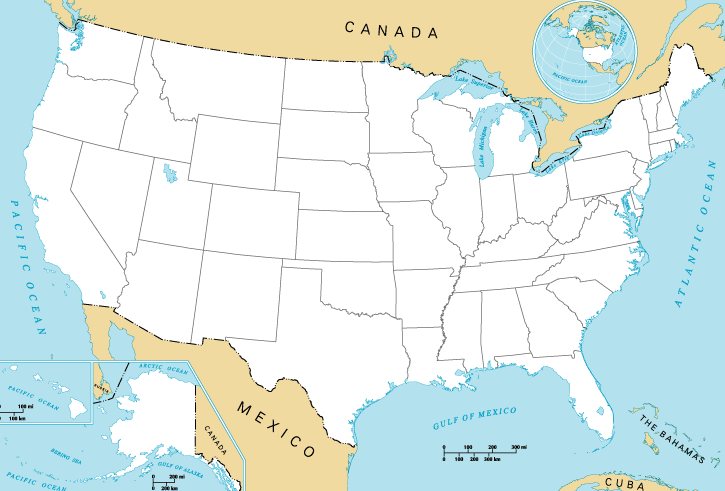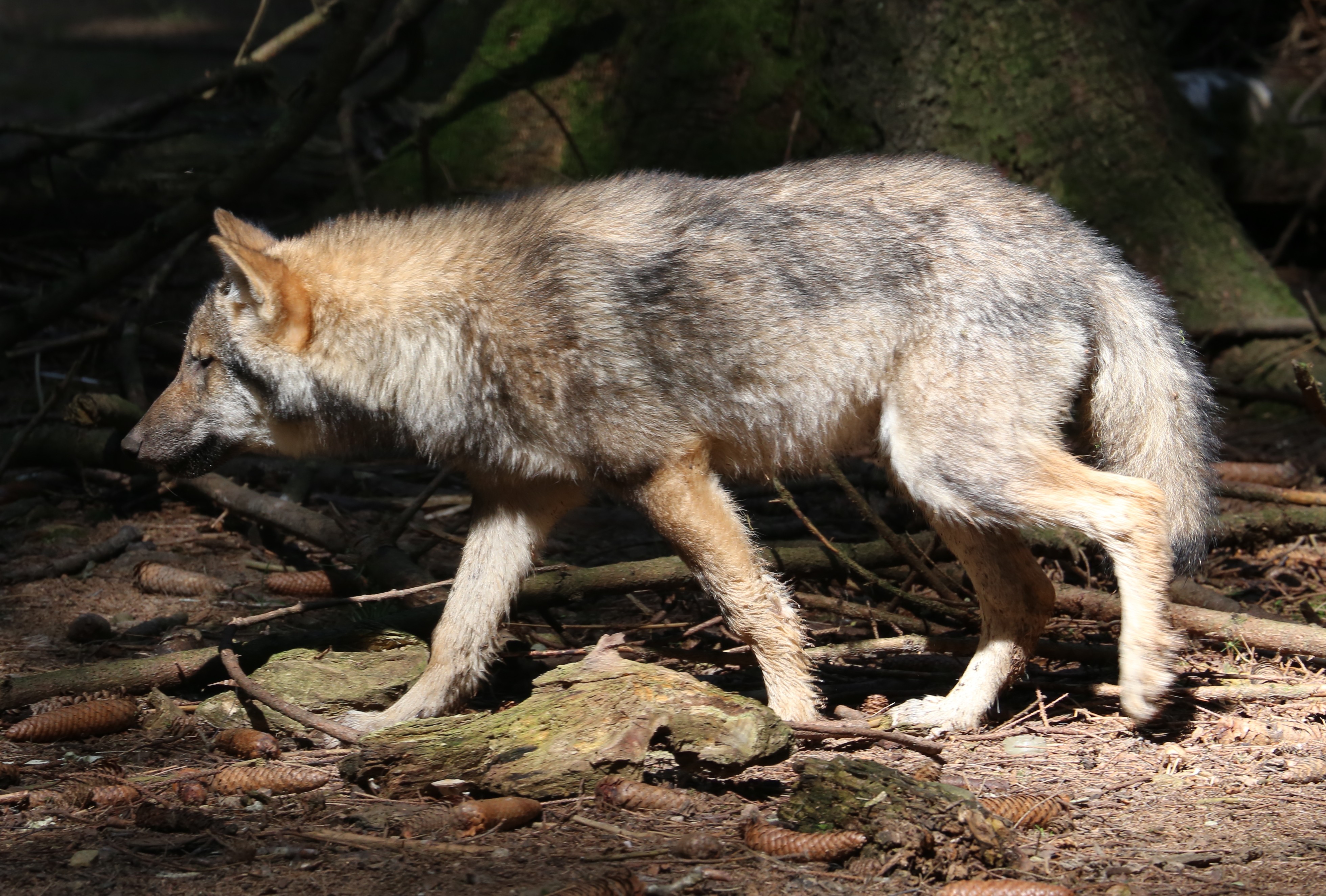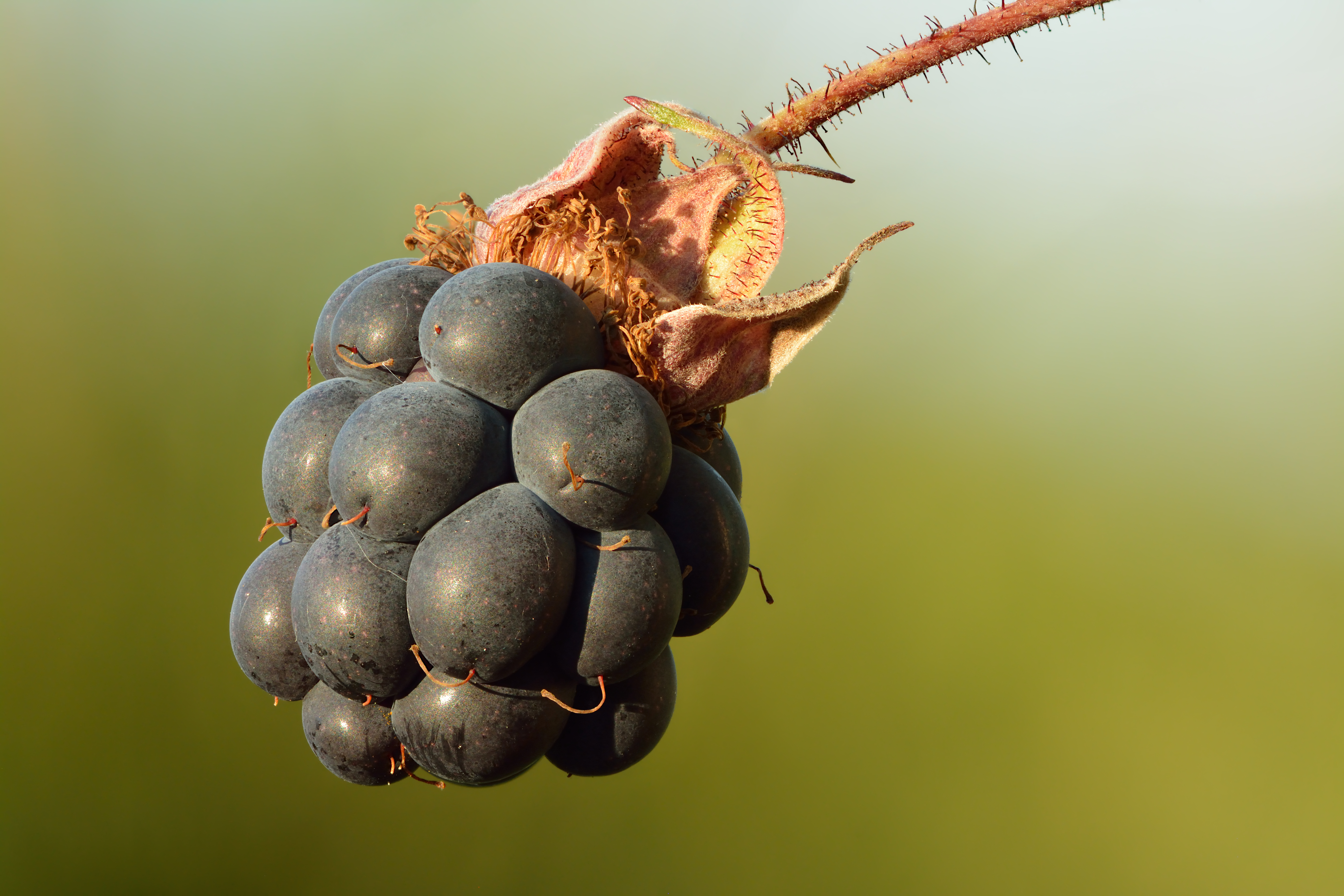|
Great Lakes-boreal Wolf
The Great Lakes-boreal wolf is a North American hybrid canine population with Great Plains wolf and eastern wolf ancestry. By the 1960s, wolves of this population were the only wolves which had survived in the United States. The Great Lakes-boreal wolf inhabits the temperate broadleaf and mixed forests of the Great Lakes region. This animal largely preys on large ungulates such as moose and white-tailed deer in winter, though they also beavers in spring and summer. Taxonomy This canine has been referred as the Minnesota wolf, Great Lakes wolf, and Great Lakes-boreal wolf. Edward Alphonso Goldman noted the presence of the Great Lakes-boreal wolf and wrote that wolf specimens from Minnesota and Michigan had characteristics intermediate between the Great Plains wolf and the eastern wolf, though he referred these as eastern wolves. A 2011 study showed that wolves in the Great Lakes before 1950 showed more affinity to eastern wolves based on skull remains. However, during the early ... [...More Info...] [...Related Items...] OR: [Wikipedia] [Google] [Baidu] |
Great Plains Wolf
The Great Plains wolf (''Canis lupus nubilus''), also known as the buffalo wolf, lobo wolf or loafer, is a subspecies of gray wolf that once extended throughout the Great Plains, from southern Manitoba and Saskatchewan in Canada southward to northern Texas in the United States. The subspecies was thought to be extinct in the wild in 1926, until studies declared that its descendants were found in Minnesota, Wisconsin and Michigan. In addition, 20 wolves were bought by Dr. Edward Heber McCleery, whose descendants are now located in Bridger, Montana. They were described as a large, light-colored wolf but with black and white varying between individual wolves, with some all white or all black. The Native Americans of North Dakota told of how only three Great Plains wolves could bring down any sized bison. Taxonomy This wolf was first recorded in 1823 by the naturalist Thomas Say in his writings on Major Stephen Long's expedition to the Great Plains. Say was the first person to d ... [...More Info...] [...Related Items...] OR: [Wikipedia] [Google] [Baidu] |
White-tailed Deer
The white-tailed deer (''Odocoileus virginianus''), also known Common name, commonly as the whitetail and the Virginia deer, is a medium-sized species of deer native to North America, North, Central America, Central and South America. It is the most widely-distributed mainland ungulate herbivore in the Americas; coupled with its natural predator, the Cougar, mountain lion (''Puma concolor''), it is one of the most widely-distributed terrestrial mammal species in the Americas and the world. Highly adaptable, the various subspecies of white-tailed deer inhabit many different ecosystems, from arid grasslands to the Amazon basin, Amazon and Orinoco Basin, Orinoco basins; from the Pantanal and the Llanos to the high-elevation terrain of the Andes. Globally, the white-tailed deer has been introduced (primarily for Trophy hunting, sport hunting) to New Zealand, the Greater Antilles of the Caribbean (Cuba, Jamaica, Hispaniola, and Puerto Rico), and some countries in Europe (mainly the Cz ... [...More Info...] [...Related Items...] OR: [Wikipedia] [Google] [Baidu] |
Wisconsin
Wisconsin ( ) is a U.S. state, state in the Great Lakes region, Great Lakes region of the Upper Midwest of the United States. It borders Minnesota to the west, Iowa to the southwest, Illinois to the south, Lake Michigan to the east, Michigan to the northeast, and Lake Superior to the north. With a population of about 6 million and an area of about 65,500 square miles, Wisconsin is the List of U.S. states and territories by population, 20th-largest state by population and the List of U.S. states and territories by area, 23rd-largest by area. It has List of counties in Wisconsin, 72 counties. Its List of municipalities in Wisconsin by population, most populous city is Milwaukee; its List of capitals in the United States, capital and second-most populous city is Madison, Wisconsin, Madison. Other urban areas include Green Bay, Wisconsin, Green Bay, Kenosha, Wisconsin, Kenosha, Racine, Wisconsin, Racine, Eau Claire, Wisconsin, Eau Claire, and the Fox Cities. Geography of Wiscon ... [...More Info...] [...Related Items...] OR: [Wikipedia] [Google] [Baidu] |
Midwestern United States
The Midwestern United States (also referred to as the Midwest, the Heartland or the American Midwest) is one of the four census regions defined by the United States Census Bureau. It occupies the northern central part of the United States. It was officially named the North Central Region by the U.S. Census Bureau until 1984. It is between the Northeastern United States and the Western United States, with Canada to the north and the Southern United States to the south. The U.S. Census Bureau's definition consists of 12 states in the north central United States: Illinois, Indiana, Iowa, Kansas, Michigan, Minnesota, Missouri, Nebraska, North Dakota, Ohio, South Dakota, and Wisconsin. The region generally lies on the broad Interior Plain between the states occupying the Appalachian Mountain range and the states occupying the Rocky Mountain range. Major rivers in the region include, from east to west, the Ohio River, the Upper Mississippi River, and the Missouri River. The 2020 ... [...More Info...] [...Related Items...] OR: [Wikipedia] [Google] [Baidu] |
Endangered Species Act Of 1973
The Endangered Species Act of 1973 (ESA; 16 U.S.C. § 1531 et seq.) is the primary law in the United States for protecting and conserving imperiled species. Designed to protect critically imperiled species from extinction as a "consequence of economic growth and development untempered by adequate concern and conservation", the ESA was signed into law by President Presidency of Richard Nixon#Environmental policy, Richard Nixon on December 28, 1973. The Supreme Court of the United States described it as "the most comprehensive legislation for the preservation of endangered species enacted by any nation"."Tennessee Valley Authority v. Hill" 437 U.S. 153 (1978) Retrieved 24 November 2015. The purposes of the ESA are two-fold: to prevent extinction and to recover species to the point wher ... [...More Info...] [...Related Items...] OR: [Wikipedia] [Google] [Baidu] |
Conterminous United States
The contiguous United States, also known as the U.S. mainland, officially referred to as the conterminous United States, consists of the 48 adjoining U.S. states and the District of Columbia of the United States in central North America. The term excludes the only two non-contiguous states and the last two to be admitted to the Union, which are Alaska and Hawaii, and all other offshore insular areas, such as the U.S. territories of American Samoa, Guam, the Northern Mariana Islands, Puerto Rico, and the U.S. Virgin Islands. The colloquial term ''Lower48'' is also used, especially in relation to Alaska. The term The Mainland is used in Hawaii. The related but distinct term ''continental United States'' includes Alaska, which is also on North America, but separated from the 48 states by British Columbia in Canada, but excludes Hawaii and all the insular areas in the Caribbean and the Pacific. The greatest distance on a great-circle route entirely within the contiguous U.S. is 2,80 ... [...More Info...] [...Related Items...] OR: [Wikipedia] [Google] [Baidu] |
Extirpated
Local extinction, also extirpation, is the termination of a species (or other taxon) in a chosen geographic area of study, though it still exists elsewhere. Local extinctions are contrasted with global extinctions. Local extinctions mark a change in the ecology of an area. It has sometimes been followed by a replacement of the species taken from other locations, such as with wolf reintroduction. Discussion Glaciation is one factor that leads to local extinction. This was the case during the Pleistocene glaciation event in North America. During this period, most of the native North American species of earthworm were killed in places covered by glaciation. This left them open for colonization by European earthworms brought over in soil from Europe. Species naturally become extinct from islands over time; this can be either local extinction if the species also occurs elsewhere, or in cases of island endemism, outright extinction. The number of species an island can support is ... [...More Info...] [...Related Items...] OR: [Wikipedia] [Google] [Baidu] |
Grey Wolves
The wolf (''Canis lupus''; : wolves), also known as the grey wolf or gray wolf, is a canine native to Eurasia and North America. More than thirty subspecies of ''Canis lupus'' have been recognized, including the dog and dingo, though grey wolves, as popularly understood, only comprise naturally-occurring wild subspecies. The wolf is the largest wild extant member of the family Canidae, and is further distinguished from other ''Canis'' species by its less pointed ears and muzzle, as well as a shorter torso and a longer tail. The wolf is nonetheless related closely enough to smaller ''Canis'' species, such as the coyote and the golden jackal, to produce fertile hybrids with them. The wolf's fur is usually mottled white, brown, grey, and black, although subspecies in the arctic region may be nearly all white. Of all members of the genus ''Canis'', the wolf is most specialized for cooperative game hunting as demonstrated by its physical adaptations to tackling large prey, ... [...More Info...] [...Related Items...] OR: [Wikipedia] [Google] [Baidu] |
American Black Bear
The American black bear (''Ursus americanus''), or simply black bear, is a species of medium-sized bear which is Endemism, endemic to North America. It is the continent's smallest and most widely distributed bear species. It is an omnivore, with a diet varying greatly depending on season and location. It typically lives in largely forested areas; it will leave forests in search of food and is sometimes attracted to human communities due to the immediate availability of food. The International Union for Conservation of Nature (IUCN) lists the American black bear as a least-concern species because of its widespread distribution and a large population, estimated to be twice that of all other bear species combined. Along with the brown bear (''Ursus arctos''), it is one of the two modern bear species not considered by the IUCN to be globally threatened with extinction. Taxonomy and evolution The American black bear is not closely related to the brown bear or polar bear, though all ... [...More Info...] [...Related Items...] OR: [Wikipedia] [Google] [Baidu] |
Snowshoe Hare
The snowshoe hare (''Lepus americanus''), also called the varying hare or snowshoe rabbit, is a species of hare found in North America. It has the name "snowshoe" because of the large size of its hind feet. The animal's feet prevent it from sinking into the snow when it hops and walks. Its feet also have fur on the soles to protect it from freezing temperatures. For camouflage, its fur turns white during the winter and rusty brown during the summer. Its flanks are white year-round. The snowshoe hare is also distinguishable by the black tufts of fur on the edge of its ears. Its ears are shorter than those of most other hares. In summer, it feeds on plants such as grass, ferns, and leaves; in winter, it eats twigs, the bark from trees, and plants and, similar to the Arctic hare, has been known to occasionally eat dead animals. It can sometimes be seen feeding in small groups. This animal is mainly active at night and does not hibernate. The snowshoe hare may have up to four litte ... [...More Info...] [...Related Items...] OR: [Wikipedia] [Google] [Baidu] |
Rubus
''Rubus'' is a large and diverse genus of flowering plants in the rose family, Rosaceae, subfamily Rosoideae, most commonly known as brambles. Fruits of various species are known as raspberries, blackberries, dewberries, and bristleberries. It is a diverse genus, with the estimated number of ''Rubus'' species varying from 250 to over 1000, found across all continents except Antarctica. Most of these plants have woody stems with prickles like roses; spines, bristles, and gland-tipped hairs are also common in the genus. The ''Rubus'' fruit, sometimes called a bramble fruit, is an aggregate of drupelets. The term ''cane fruit'' or ''cane berry'' applies to any ''Rubus'' species or hybrid which is commonly grown with supports such as wires or canes, including raspberries, blackberries, and hybrids such as loganberry, boysenberry, marionberry and tayberry. The stems of such plants are also referred to as ''canes''. Description Bramble bushes typically grow as shrubs (t ... [...More Info...] [...Related Items...] OR: [Wikipedia] [Google] [Baidu] |







